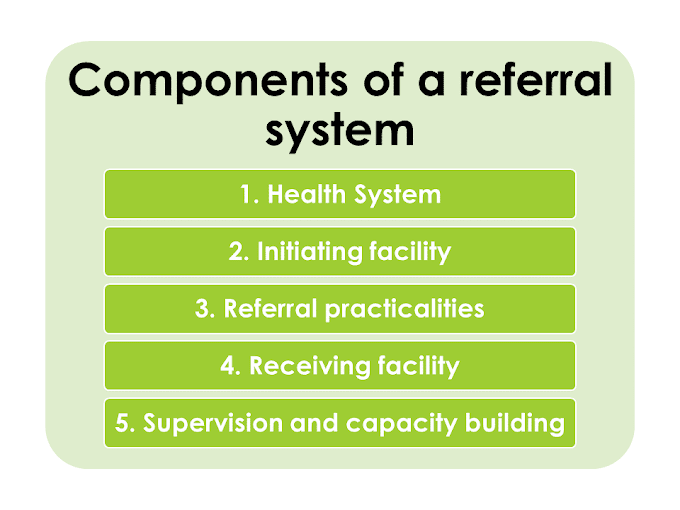- Avoid the supine position in pregnant women to prevent the client from supine hypotension.
- Client with prolapse umbilical cord place into extreme Trendelenburg’s or modified sims position or a knee-chest position.
- Sudden onset of painless, bright red vaginal bleeding occurs in the last half of pregnancy, uterus is soft, relaxed, and nontender. Fundal height may be more than expected for gestational age are the signs of placenta previa.
- Abruptio placentae is premature separation of the placenta from the uterine wall after the twentieth week of gestation and before the fetus is delivered.
- Dark red vaginal bleeding, uterine pain or tenderness, uterine rigidity, severe abdominal pain, signs of fetal distress, and signs of maternal shock if bleeding is excessive are the signs of abruptio placentae.
- In placenta previa, there is painless, bright red vaginal bleeding, and the uterus is soft, relaxed, and nontender.
- In abruptio placentae, there is dark red vaginal bleeding, uterine pain or tenderness, and uterine rigidity are present.
- Placenta accreta is an abnormally adherent placenta.
- Placenta increta occurs when the placenta penetrates the uterine muscle itself.
- Placenta percreta occurs when the placenta goes all the way through the uterus.
- Preterm labor occurs after the twentieth week but before the thirty-seventh week of gestation.
- Involution is the rapid decrease in the size of the uterus as it returns to the nonpregnant state.
- Lochia rubra is bright red discharge that occurs from delivery day to day 3.
- Lochia serosa is brownish pink discharge that occurs from days 4 to 10 day after birth of baby.
- Lochia alba is white discharge that occurs from days 11 to 14.
- To determine most accurately the amount of lochial flow, weight the perineal pad before and after use and identify the amount of time between pad changes.
- Oral contraceptives containing oestrogen are not recommended for breastfeeding mothers. Progestin only birth control pills are less likely to interfere with the milk supply.
- Bleeding of 500 mL or more after delivery is postpartum hemorrhage.
- Early postpartum haemorrhage occurs during the first 24 hours following delivery.
- Late postpartum haemorrhage occurs after the first 24 hours following delivery.
- The new-born’s Apgar score is assessed and recorded at 1 minute and at 5 minutes after birth.
- Fontanels are unossified membranous tissue at the junction of the sutures.
- Anterior fontanel is close between 12 to 18 months of age.
- Posterior fontanel is close between birth and 2 to 3 months of age.
- Caput succedaneum is edema of the soft tissue over bone (crosses over suture line); it subsides within a few days.
- Cephalohematoma is swelling caused by bleeding into an area between the bone and its periosteum (does not cross over suture line); it usually is absorbed within 6 weeks with no treatment.
- Epstein's pearls are small, white cysts may be present on hard palate.
- The new-born chest is circular in appearance because anteroposterior and lateral diameters are about equal. (Approximately 30 to 33 cm).
- The new born respiration is diaphragmatic respirations- chest and abdomen should rise and fall in synchrony, not in seesaw pattern.
- Milia, small white sebaceous glands, appear on the forehead, nose, and chin.
- Acrocyanosis (peripheral cyanosis) is normal in the first few hours after birth and may be noted intermittently for the next 7 to 10 days.
- In Harlequin sign deep pink or red color develops over one side of new-born body while the other side remains pale or of normal color.
- Harlequin sign may indicate shunting of blood that occurs with a cardiac problem or may indicate sepsis.
- Newborn receives passive immunity via the placenta (Immunoglobulin G).
- Newborn receives passive immunity from colostrum (Immunoglobulin A).
- Elevation in immunoglobulin M in newborn indicate infection in utero.
- Nurse administer eye medication within 1 hour after birth to prevent ophthalmia neonatorum. (Ophthalmic forms of Erythromycin 0.5% or tetracycline 1% are prescribed because they are bacteriostatic and bactericidal, and provide prophylaxis against Neisseria gonorrhoea and Chlamydial infections)
- Silver nitrate (1%) solution may be prescribed, but its use is minimal because it does not protect against Chlamydial infection and it can cause chemical conjunctivitis.
- Nurse umbilical clamp can be removed after 24 hours if cord is dried and occluded and is not bleeding.
- Nurse keep the cord clean and dry and prevent covering the cord with diaper, fold the diaper below the cord.
- The newborn is washed via a sponge bath until the cord falls off.
- Newborn are able to digest simple carbohydrates, but are unable to digest fats because of the lack of lipase.
- In newborn protein may be broken down only partially, so they may serve as antigens and provoke an allergic reaction.
- The newborn has a small stomach capacity (about 90 mL), with rapid intestinal peristalsis (bowel emptying time is 2.5 to 3 hours).
- Nurse position the newborn on the right side after feeding; however, the side-lying position is not recommended for sleep because this position makes it easy for the newborn to roll to the prone position.
- Prone position is contraindicated in newborn because the prone position increases the risk of sudden infant death syndrome.
- Meconium stool, which is greenish black with a thick, sticky, tar-like consistency, usually is passed within the first 24 hours of life.
- Seedy, yellow stools are usually noted in breast-feed newborn.
- Pale yellow to light brown stools is usually seen in formula feeding newborn.
- Effects of cold stress in newborn, leading to metabolic acidosis.
- Newborn do not shiver to produce heat. So, nurse prevent newborn from cold stress.
- Newborn have brown fat deposits, which produce heat.
- The Babinski reflex disappears after the newborn is 1 year old.
- Prevention of anti-Rh (D) antibody formation is most successful if the medication is administered twice, at 28 weeks of gestation and again within 72 hours after delivery.
- Tocolytics are medications that produce uterine relaxation and suppress uterine activity in an attempt to halt uterine contractions and prevent preterm birth.
- Maternal contraindications for tocolytics include severe pre-eclampsia and eclampsia, active vaginal bleeding, intrauterine infection, cardiac disease, and medical or obstetric condition that contraindicates continuation of pregnancy.
- Fetal contraindications for tocolytics include estimated gestational age greater than 37 weeks, cervical dilation greater than 4 cm, fetal demise, lethal fetal anomaly, chorioamnionitis, acute fetal distress, and chronic intrauterine growth restriction.
- Indomethacin, Magnesium sulfate, Nifedipine and terbutaline are the tocolytics.
- Indomethacin is a prostaglandin inhibitor.
- Nifedipine is calcium channel blocker tocolytics.
- Terbutaline is Beta 2 selective adrenergic agonist tocolytics.
- Premature closure of ductus arteriosus in fetus is the adverse reaction of Indomethacin tocolytics.
- Bronchopulmonary dysplasia, respiratory distress syndrome, intracranial pressure, necrotizing enterocolitis, and hyperbilirubinemia in newborn are the adverse effect of indomethacin tocolytics.
- Nurse prepares the client to determine amniotic fluid volume and function of the ductus arteriosus before therapy and within 48 hours of discontinuing therapy of indomethacin tocolytics.
- Magnesium sulfate is a central nervous system depressant; relaxes smooth muscle, including the uterus; used to halt preterm labor contractions; used for preeclamptic clients to prevent seizures.
- Depressed respirations, depressed deep tendon reflex (DTRs), hypotension, extreme muscle weakness, flushing, decreased urine output, pulmonary edema, and serum Magnesium levels >9 mg/dL are the adverse reaction of Magnesium sulfate in mother.
- Hypotonia and sleepiness are the adverse effects of Magnesium sulfate in newborn.
- Nurse use the intravenous controller pump for administration of Magnesium sulfate.
- Nifedipine relaxes the smooth muscles of uterus by blocking calcium entry.
- Nurse keep the calcium gluconate at bedside the client with Magnesium sulfate therapy.
- High dose of Magnesium sulfate cause loss of deep tendon reflexes, heart block, respiratory paralysis, and cardiac arrest.
- Nurse monitor deep tendon reflexes hourly for signs of developing toxicity of Magnesium sulfate.
- Nurse call the health care provider if respirations are less than 12 breath/min, in client with Magnesium sulfate therapy.
- Betamethasone and dexamethasone are the corticosteroids that increase the production of surfactant to accelerate fetal lung maturity and reduce the incidence or severity of respiratory distress syndrome.
- Naloxone is the antidotes for opioids.
- Nalmefene is a long-acting opioid antagonist that does not require repeat doses.
- Prostaglandin ripen the cervix, and stimulate uterine contractions.
- Rubella vaccine is administered if the rubella titer is less than 1:8.
- Rubella vaccine is contraindicated in a client with an allergy to duck eggs.
- The client should avoid pregnancy for 1 to 3 months after immunization with rubella vaccine.
- Lung surfactants are administered by the intratracheal route.
- Nurse do not perform suctioning for at least 2 hours after administration of lung surfactants.
- Beractant, Calfactant, and Poractant are the lung surfactants.
- Vitamin K can cause hyperbilirubinemia in the newborn.
- After the birth of the newborn all connection of fetal circulation will close, and ductus venosus become ligamentum venosum, ductus arteriosus become ligamentum arteriosum, and foramen ovale become fossa ovalis.
- The umbilical cord is attached to the chorionic plate.
- Amniotic fluid volume reaches the peak (1000 ml) at 36-38 weeks.
- The green color of amniotic fluid indicates the presence of meconium.
- Amniotic fluid appears golden color in Rh incompatibility.
- Amniotic fluid appears dark-brown color in intrauterine fetal death.
- Funis is the other name of umbilical cord.
- Hematopoiesis begins first in the yolk sac by 14th day of conception.
- Total iron requirement during pregnancy is estimated approximately 1000 mg per day.
- Greatest weight gain of the fetus occurs in third trimester of pregnancy.
- Greatest growth in length of fetus occurs in second trimester of pregnancy.
- Johnsons formula is used for the estimation of fetal weight.
- Pacemaker of the uterine contraction is situated in the region of the tubal ostia.
- Failure of secretion by the cells of amnion covering the placenta is called amnion nodosum.
- Absence of communicating blood vessels in placenta is called placenta spuria.
- One or more lobe of placenta placed at varying distance from main placenta is called placenta succenturiata.
- Cord attached to the margin of placenta is called battledore placenta.
- Absence of one ala of the sacrum is called Naegele’s pelvic. Absence of both sacral alae is called Robert’s pelvic.
- Burn Marshall method is used to deliver the fetus in breach presentation.
- Cleidotomy is one or both clavicles may be cut with scissors to reduce the shoulder girth.
- Oxytocin has a half-life of 3-4 minutes, and duration of action of approximately 20 minutes.
- The three phases of a uterine contraction are increment, acme, and decrement.
- The corpus luteum secrets large quantities of progesterone.
- Stress, dehydration, and fatigue may reduce a breastfeeding mother's milk supply.
- Cytomegalovirus is the leading cause of congenital viral infection.
- Pelvic-tilt exercises can help to prevent or relieve backache during pregnancy.
110 Nursing Bullets of Maternity Nursing
Footer Menu Widget
Created by Website Designer In India | Distributed by Blogger Templates





0 Comments